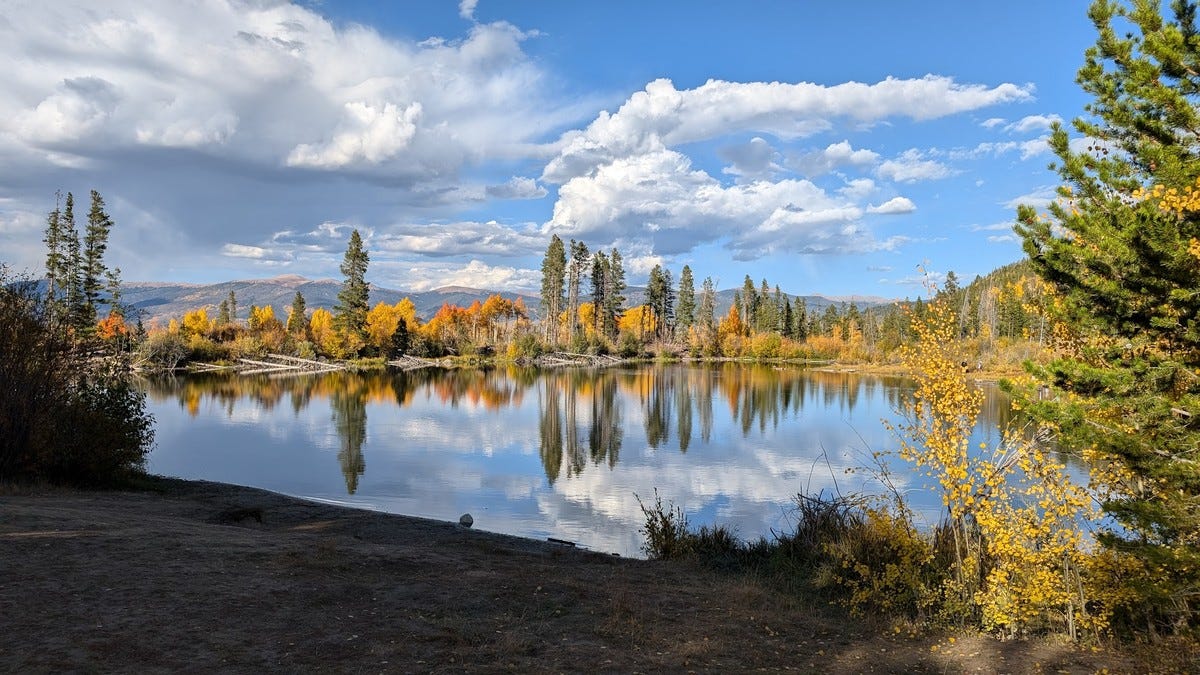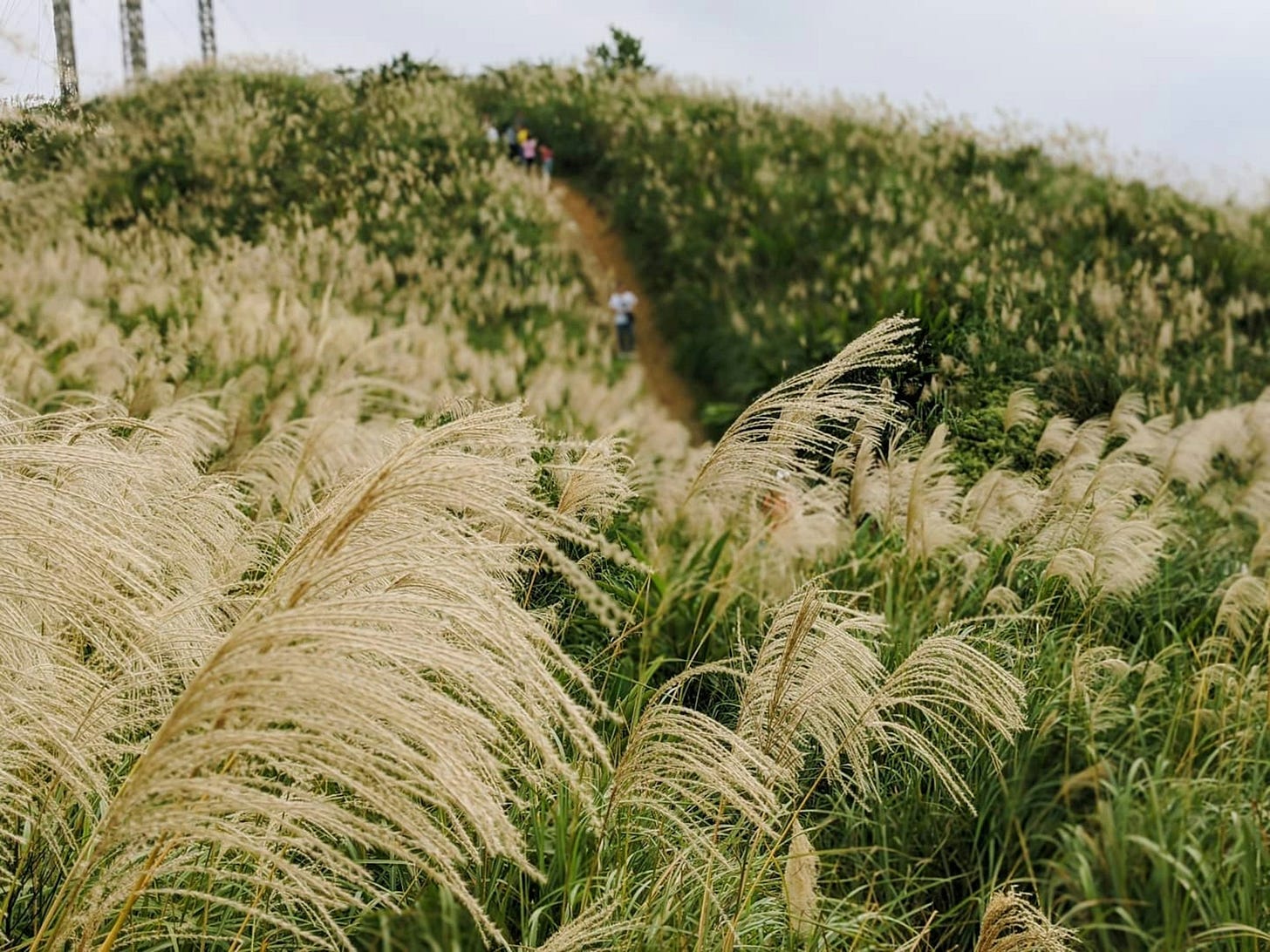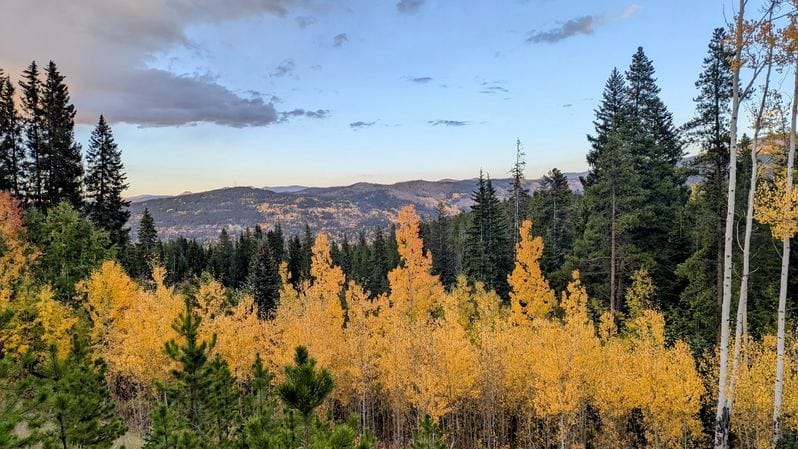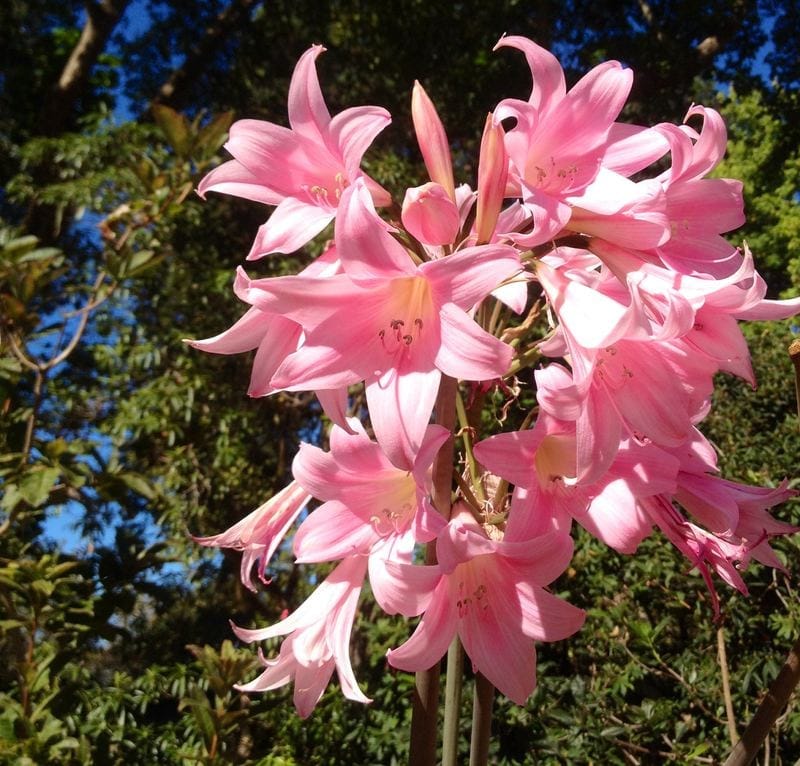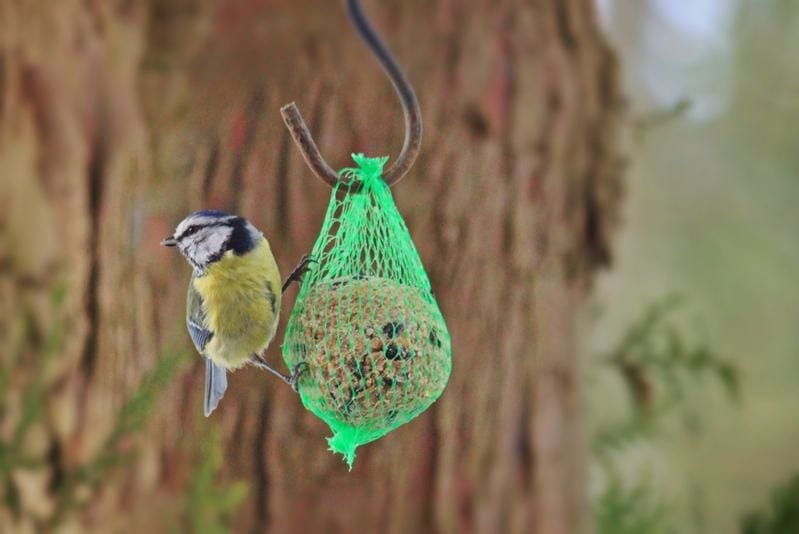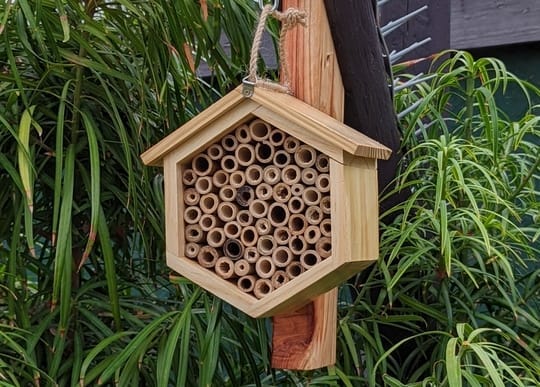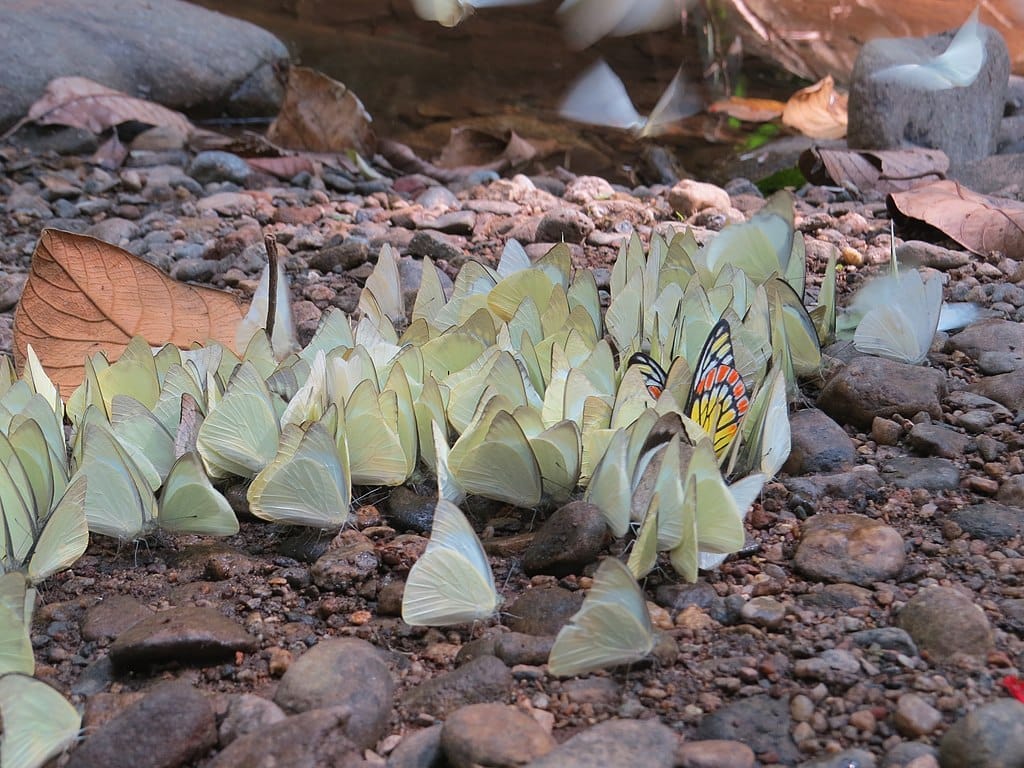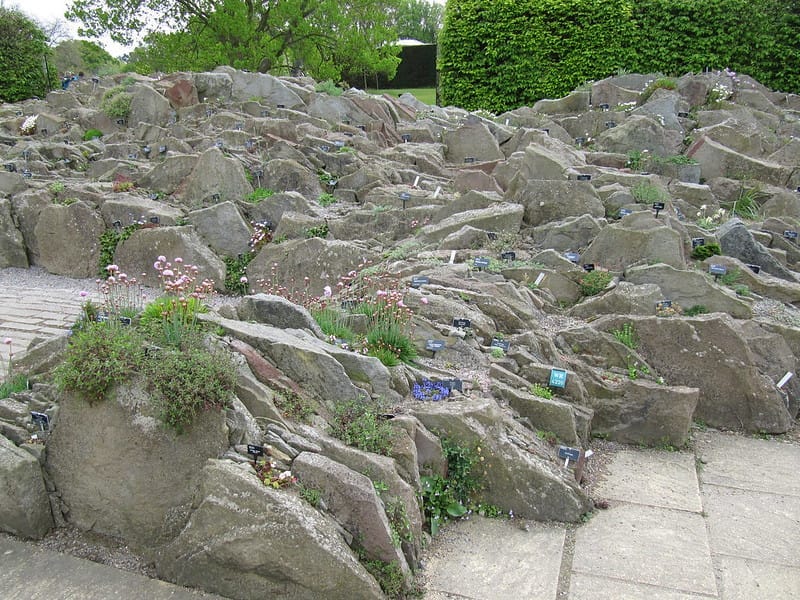Fall Colors - Showcase Autumnal Charm in your Garden
By embracing fall’s natural transformation, you can design a vibrant garden that mirrors the beauty of the season, inviting both visual delight and wildlife into your space.
We don't have much ability to design pumpkin spice lattes or cold weather in our gardens, but we can plan for a garden that showcases the Fall Colors. Fall Colors happen due to the leaves losing their green color that was held all Summer and slowly fading to brown before falling to the ground. Once the leaves are fallen, the plant that sheds them will go into hibernation (dormancy) for the Winter, ready for rebirth in the Spring.
First, before we discuss how to design around Fall Color, let's discuss the science behind Fall Color.
Senescence
The process that causes leaves to change color in the fall is called "leaf senescence". Trees prepare for winter during leaf senescence by shutting down their food production process.
Here are 4 important factors in the senescence of leaves:
Chlorophyll Breakdown: Leaves contain chlorophyll, the pigment responsible for their green color. Chlorophyll is essential for photosynthesis, the process that plants use to convert sunlight into energy. As temperatures drop and daylight hours decrease in Autumn, chlorophyll production slows and eventually stops. Existing chlorophyll in the leaves breaks down, reducing the green color.
Revealing Carotenoids: As chlorophyll degrades, other pigments present in the leaves, like carotenoids, become visible. Carotenoids are responsible for yellow and orange colors. These pigments are always in the leaves and are normally masked by the dominant green of chlorophyll during Spring and Summer.
Anthocyanin Production: In some tree species, like maples (Acer spp.), cooler temperatures and bright sunlight stimulate the production of anthocyanins. These pigments give leaves red, purple, or blue hues. The combination of anthocyanins, carotenoids, and diminishing chlorophyll gives leaves their vibrant range of colors.
Leaf Detachment: Eventually, as senescence progresses, the connection between the leaf and the tree weakens. A specialized layer called the abscission layer forms at the base of the leaf stem. This layer eventually causes the leaf to detach and fall to the ground.
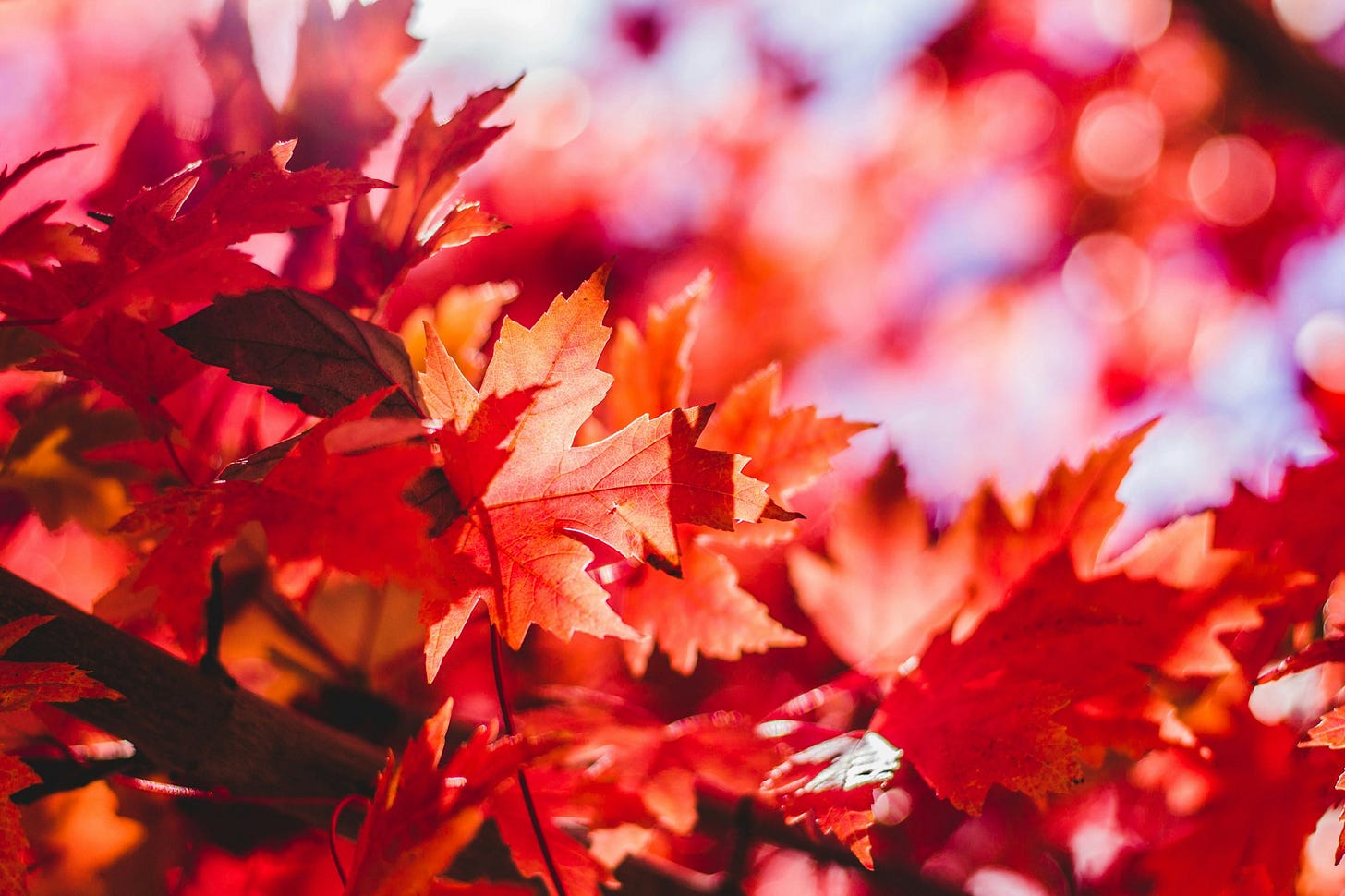
Senescence is influenced by factors like temperature, sunlight, soil moisture, and the species of tree. A combination of warm sunny days and cool nights tends to produce the most vibrant and long-lasting fall colors.
10 Ways to Incorporate Fall Color into your Planting Plans
Incorporating fall colors into a garden planting plan can create a vibrant landscape that enhances your outdoor space during autumn.
Here are some clever ideas to achieve that:
1. Mix Deciduous Shrubs and Trees
Choose trees and shrubs that show off stunning fall foliage. Varieties like Maples (Acer spp.), Oaks (Quercus spp.), Dogwoods (Cornus spp.), and sweetgum (Liquidambar styraciflua) are known for their red, orange, and yellow hues. Pair them with smaller shrubs like Burning Bush (Euonymus alatus), Smoke Bush (Cotinus spp.), and Sumac (Rhus spp.) for dramatic reds and purples. The varying heights create a multi-layered effect in the garden. Well-placed trees can also have an architectural effect when shed of their leaves in Winter.
2. Plant Late-Blooming Perennials
Integrate late-blooming perennials such as Goldenrod (Solidago spp.), Autumn Joy Stonecrop (Hylotelephium telephium 'Herbstfreude') and Sunflowers (Helianthus annus) to maintain vibrant color even as leaves start to turn. Their blooms can accentuate the warm tones of fall foliage, creating a landscape that looks like it was drawn by pastel crayons.

3. Add Ornamental Grasses
Ornamental grasses like Maiden Grass (Miscanthus sinensis), Switchgrass (Panicum virgatum), and Little Bluestem (Schizachyrium scoparium) develop golden and reddish hues in the fall. Their feathery plumes add texture, movement, and visual contrast to the bold colors of leaves and flowers.
4. Choose Colorful Groundcovers
Plant groundcovers that change color in fall, such as Creeping Thyme (Thymus serpyllum) which turns a burgundy shade, or Bugleweed (Ajuga reptans) with its bronze foliage. These groundcovers can fill spaces between larger plants and complement the changing foliage above. In the UK, Heather (Calluna vulgaris) is a popular choice for autumnal and winter color.
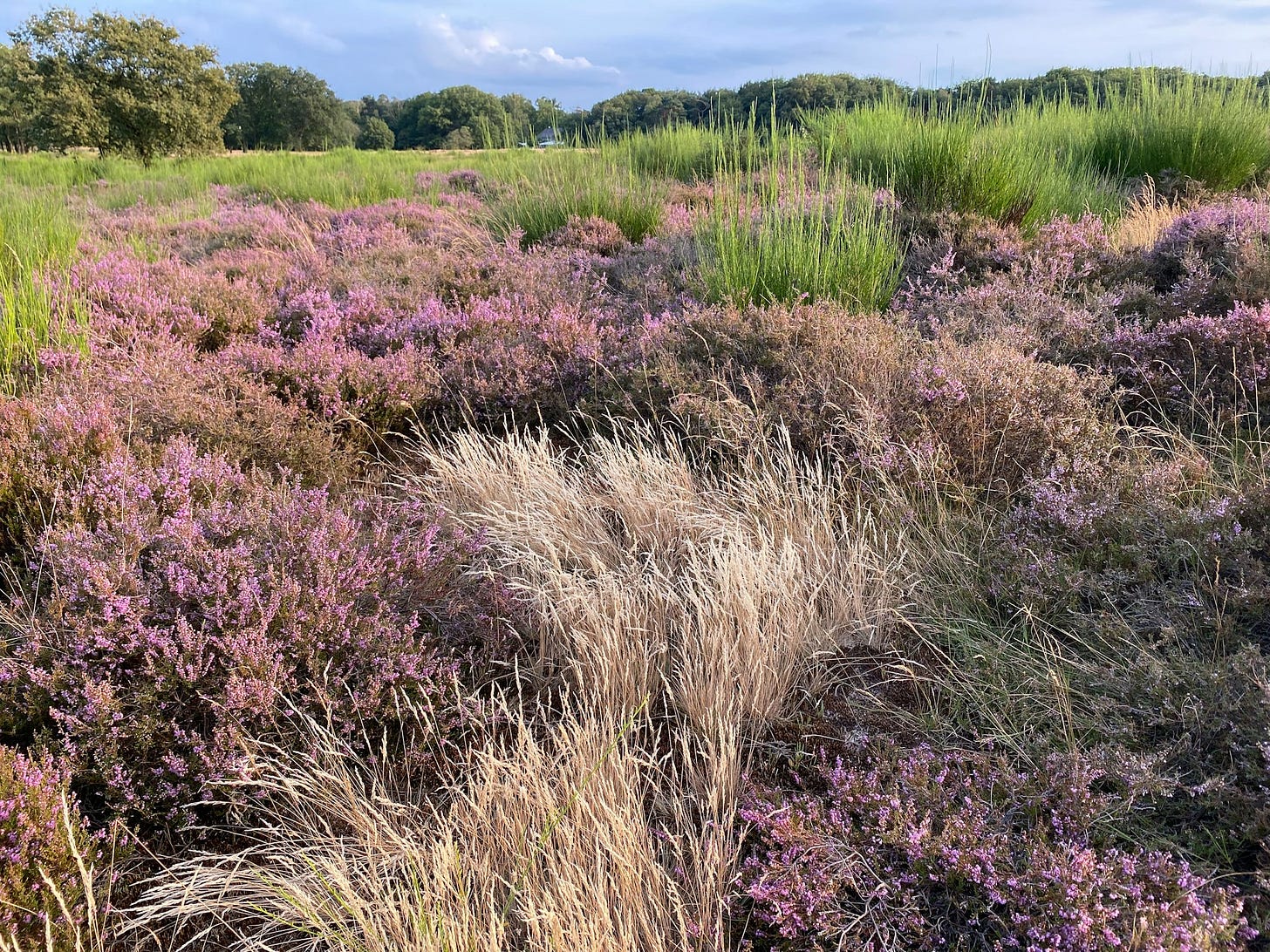
5. Mix Berries for Color and Interest
Incorporate berry-producing plants like Winterberry Holly (llex verticillata), Beautyberry (Callicarpa americana), and Toyon (Heteromeles arbutifolia) to add pops of red, purple, yellow or orange. These provide visual pops of color while also attracting birds to your garden.
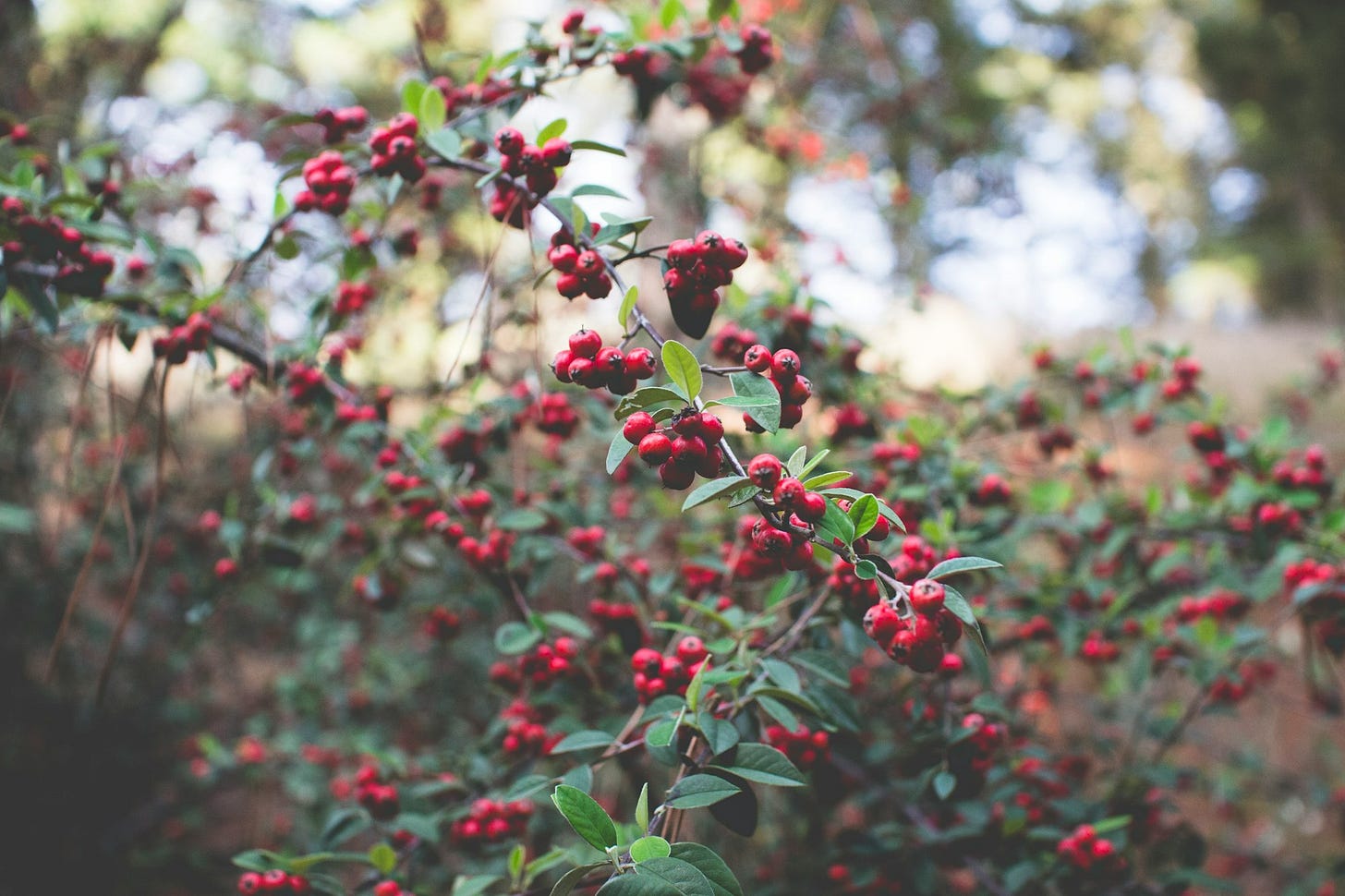
6. Integrate Evergreens for Contrast
Balance the intense fall colors with evergreens like Pine (Pinus spp.), Holly (Ilex aquifolium), or Junipers (Juniperus spp.). Their consistent green helps the warm autumn hues stand out, creating depth and a more cohesive look.
7. Use Containers and Planters for Seasonal Color
If you want flexibility, consider adding pots with seasonal plants. Fill them with local annual varieties that showcase fall tones. This also allows you to experiment with color placement and easily refresh your garden design each season.
Naked Ladies Plant (Naked Ladies (Amaryllis belladonna) is a good choice for Autumn flair with Flowers more reminiscent of Spring that start to appear in September. This is a plant that grows from a bulb.
8. Incorporate Decorative Vines
Use decorative vines like Rogers' Red Grapevine (Vitis 'Roger's Red') or Boston Ivy (Parthenocissus tricuspidata) on fences, walls, or trellises. Their leaves turn brilliant reds and oranges, adding vertical interest and making garden structures part of the fall display.
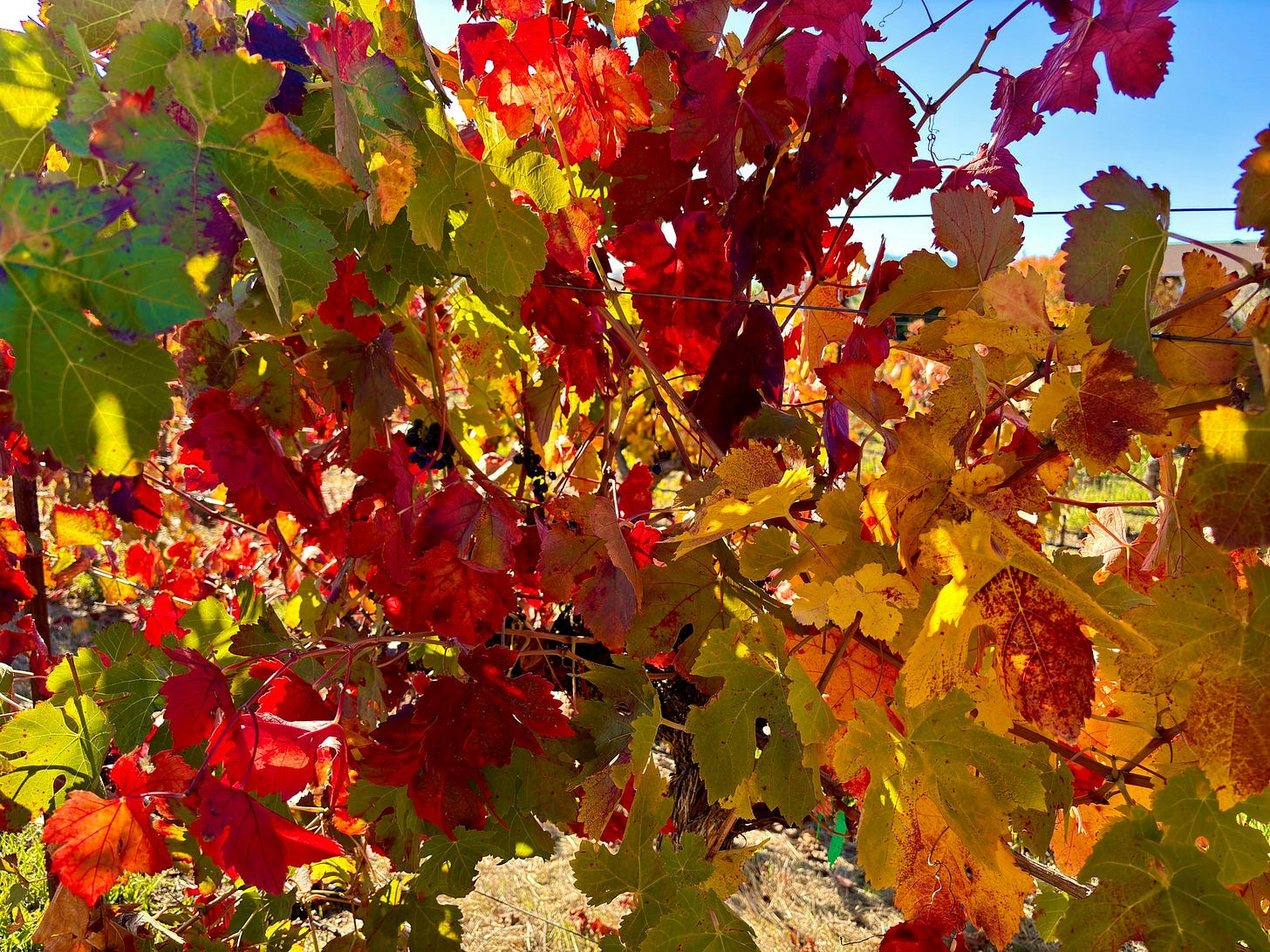
9. Play with Textured Foliage
Mix plants with contrasting textures and colors. For example, combine Coral Bells (Heuchera spp.) in shades of red and bronze with Deergrass (Muhlenbergia rigens) to add layers and depth. Varying foliage textures can help showcase the colors even more effectively.
10. Use Pathways and Hardscaping to Frame Fall Colors
Consider pathways with natural stone or wood chips that enhance the autumn colors. Curved paths can lead the eye to focal points, such as a tree with stunning fall color or a cozy seating area surrounded by a warm-colored hedge.
By thoughtfully planning your garden, you can create a cohesive and visually striking autumn landscape. This not only highlights fall colors but also provides an enjoyable garden experience during one of the most beautiful times of the year.
10 Ways to Help Wildlife in the Mud Season

Helping garden wildlife in autumn can make a significant difference in their ability to prepare for winter hibernation. As summer dry soil turns to mud, many of our garden visitors are preparing for the upcoming Winter.
Here are 10 thoughtful ways to support garden visitors like hedgehogs, birds, amphibians, and insects during this transitional season:
1. Leave Some Fallen Leaves
Fallen leaves provide an important habitat for insects, frogs, and hedgehogs. They create an insulating layer that helps many small creatures survive cold temperatures. Instead of removing all leaves, create leaf piles in quiet areas of your garden or use them to mulch garden beds. These leaf piles also encourage the natural composting process and provide shelter for hibernating wildlife.
2. Create a Log or Rock Pile
Logs and rocks can offer perfect hibernation sites for insects like beetles, amphibians like frogs and toads, and small mammals. Stack logs or rocks in a corner of the garden to provide a cozy refuge. Make sure to arrange them loosely so that there are gaps for wildlife to crawl into.

3. Install a Hedgehog House
Hedgehogs love piles of leaves, but if you want to offer them a secure and cozy home, install a hedgehog house. Place it in a quiet, undisturbed part of the garden and fill it with dry leaves or straw. Hedgehogs hibernate in winter, and providing them a safe space can improve their chances of survival. If you live in an area where Hedgehogs are native, they are a beneficial creature for your garden.
4. Offer High-Energy Foods
In autumn, many animals need to bulk up to survive winter. Set up bird feeders with high-energy foods like sunflower seeds, peanuts, fat balls, and suet.
Hedgehogs benefit from cat or dog food (without fish) and mealworms. Remember to place food for hedgehogs in shallow dishes and avoid milk, which can upset their stomachs.
5. Maintain a Clean and Fresh Water Source
Provide fresh water in shallow dishes or birdbaths, especially as natural water sources start to freeze in late autumn. Keep the water clean and change it frequently. Birds, hedgehogs, and other wildlife need access to water for drinking and bathing, which helps keep their feathers in good condition.
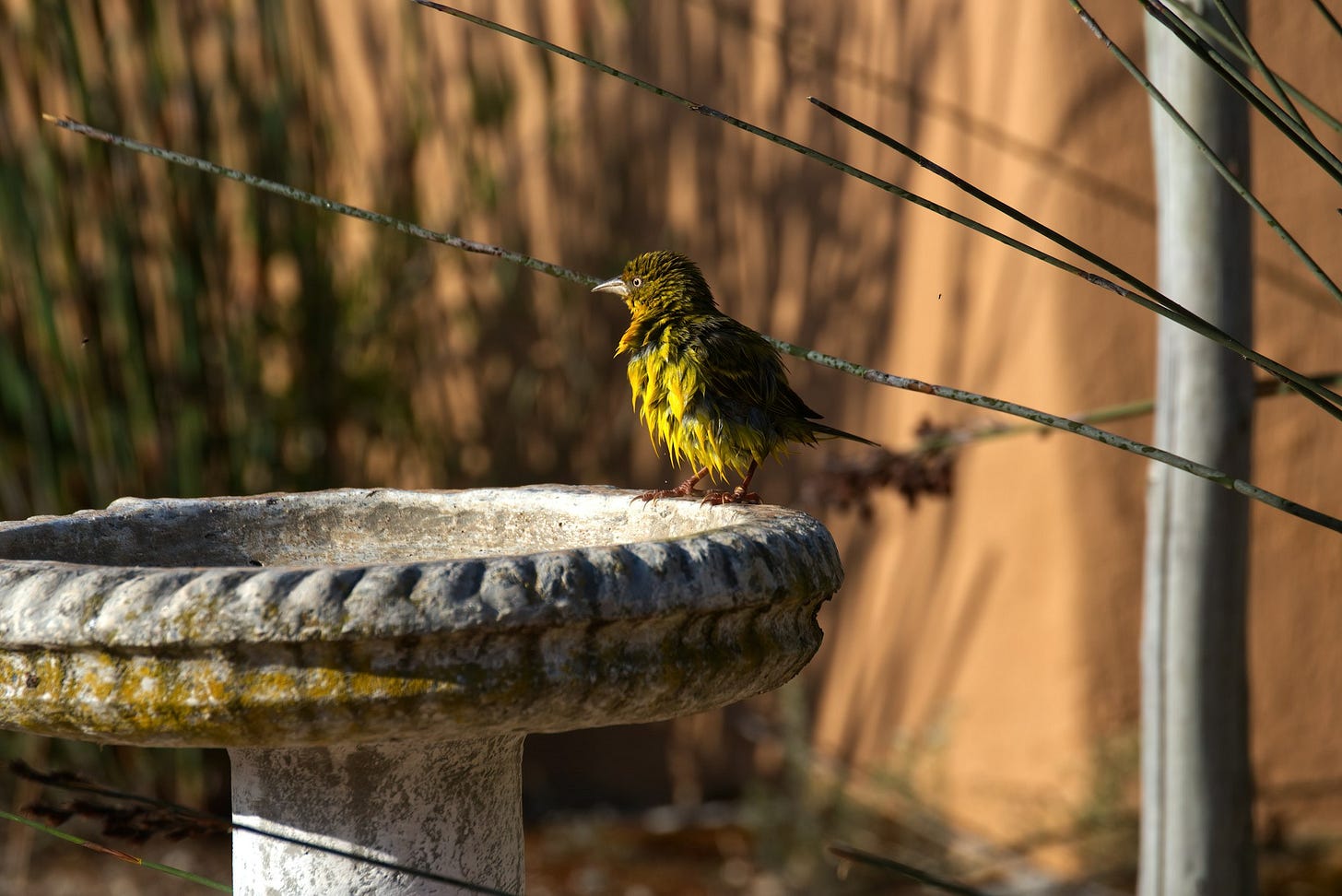
6. Delay Cutting Back Perennials and Grasses
Instead of cutting back all perennials and ornamental grasses, leave some standing throughout autumn and winter. Their seed heads provide a food source for birds and shelter for insects. In addition, the foliage of certain plants, like hollow-stemmed perennials, can house overwintering insects.
7. Install Insect Hotels
Insects like ladybugs, solitary bees, and lacewings often seek shelter during winter. Install insect hotels, or simply tie bundles of hollow stems or bamboo canes together to provide a place for them to hibernate. Place the insect hotel in a sunny and sheltered location to make it inviting for overwintering insects.
8. Create a Pond Area or Wet Zone
A garden pond or even a small puddle offers essential shelter and a water source for frogs, newts, and other wildlife. Ensure there are plenty of rocks or pond plants to provide cover, and avoid completely clearing out pond debris until spring.
This provides a habitat for aquatic insects and amphibians preparing for winter. The muddy edges are also useful as water or bathing sources for insects that can easily drown in open water.
9. Avoid Disturbing Hibernating Spots
Try to avoid heavy digging or major disturbances to areas that could be hibernation sites. If you have compost heaps, leaf piles, or dense vegetation, check these areas carefully for hedgehogs, toads, and insects before moving or turning them.
10. Build a Rockery with Crevices
A rockery, or Crevice Garden, can serve as an excellent place for reptiles and amphibians to hibernate. Stack rocks or stones with small spaces and crevices to allow them to hide and stay warm. A well-built crevice garden can offer shelter from harsh winter conditions and predators.
By making small, thoughtful changes to your garden, you can create a welcoming space for wildlife preparing for hibernation. These efforts help maintain the ecological balance and can will enhance your garden’s health and beauty throughout the Fall months as well as the other 3 seasons.
Following our guide here on creating an interesting Fall landscape by considering the Flora and the Fauna will set you up for success as the steward of a natural garden. Fall is the hardest time of the year for many plants in natural settings but it is also the start of the next generation of plants so embrace the dormancy and let nature do its thing as much as possible.


